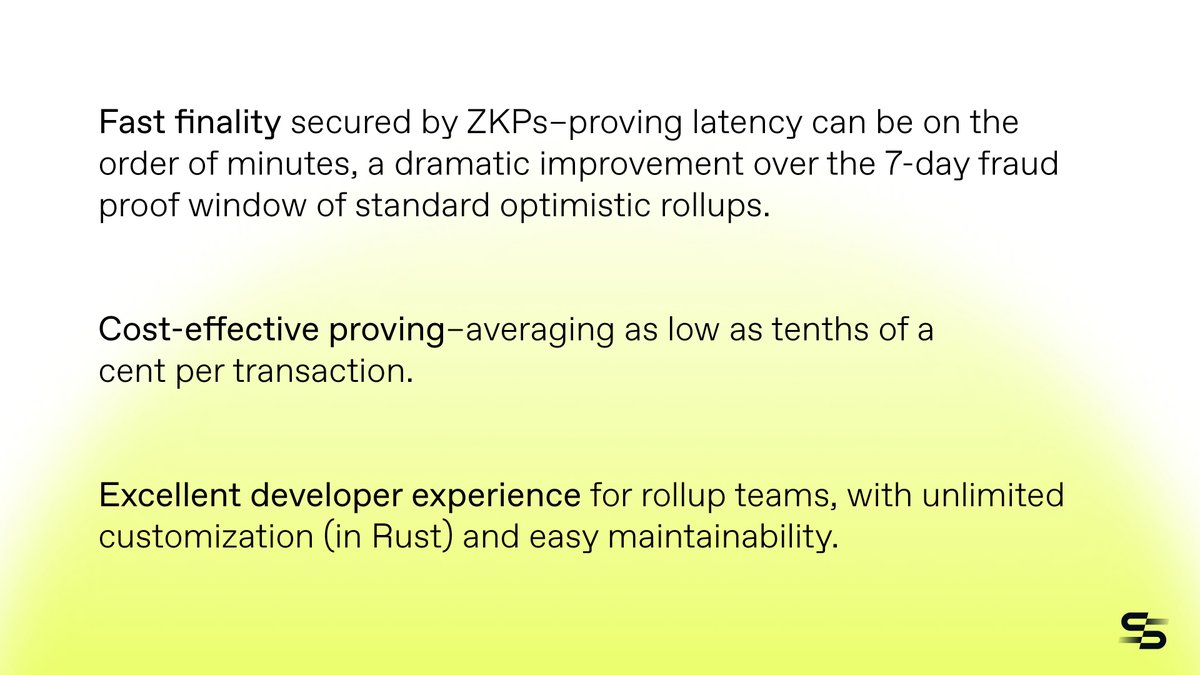Real-Time Ethereum Proving is here.
INTRODUCING: SP1 Hypercube
INTRODUCING: SP1 Hypercube
2/ Real-time Ethereum proving marks a historic moment in the ZK space race.
The ability to prove mainnet Ethereum blocks in <12 seconds has major implications for the L1’s scalability roadmap.
The ability to prove mainnet Ethereum blocks in <12 seconds has major implications for the L1’s scalability roadmap.
3/ With SP1 Hypercube, we combined novel cryptography and relentless performance engineering to become the first zkVM to achieve real-time Ethereum proving.
In a benchmark of 10,000 mainnet blocks, 93%+ of blocks were proven in <12 secs, with an average proving time of just 10.3 secs.
In a benchmark of 10,000 mainnet blocks, 93%+ of blocks were proven in <12 secs, with an average proving time of just 10.3 secs.

4/ At the heart of SP1 Hypercube is a custom-built proof system that pushes the frontier of zkVM performance by leveraging multilinear polynomials and a new polynomial commitment scheme known as the Jagged PCS.
Read our research paper:
Read our research paper:

6/ While we’ve long focused on arithmetization and hardware performance, SP1 Hypercube reflects our growing focus on the full stack of zkVM performance, including theory and proof system design.
7/ We expect that operating a real-time proving cluster for Ethereum requires ~160 4090 GPUs and can be built for ~$300-400k. With more cost-efficient hardware and proof system improvements, we estimate costs could be as low as ~$100k.
8/ After the SP1 Hypercube audit finishes, we will publish an open-source prover and cluster implementation, making it feasible for anyone to run their own real-time Ethereum prover.
9/ SP1 Hypercube’s verifier and our codebase for proving Ethereum blocks are open-source here and here respectively.
github.com/succinctlabs/h…
github.com/succinctlabs/r…
github.com/succinctlabs/h…
github.com/succinctlabs/r…
10/ This historic achievement has been a labor of love by our team.
With each SP1 release, we’re accelerating performance at a pace that puts ZK on a clear path to becoming dramatically easier for developers to build with.
We can’t wait to see what you will build with it.
blog.succinct.xyz/sp1-hypercube/
With each SP1 release, we’re accelerating performance at a pace that puts ZK on a clear path to becoming dramatically easier for developers to build with.
We can’t wait to see what you will build with it.
blog.succinct.xyz/sp1-hypercube/
• • •
Missing some Tweet in this thread? You can try to
force a refresh
















